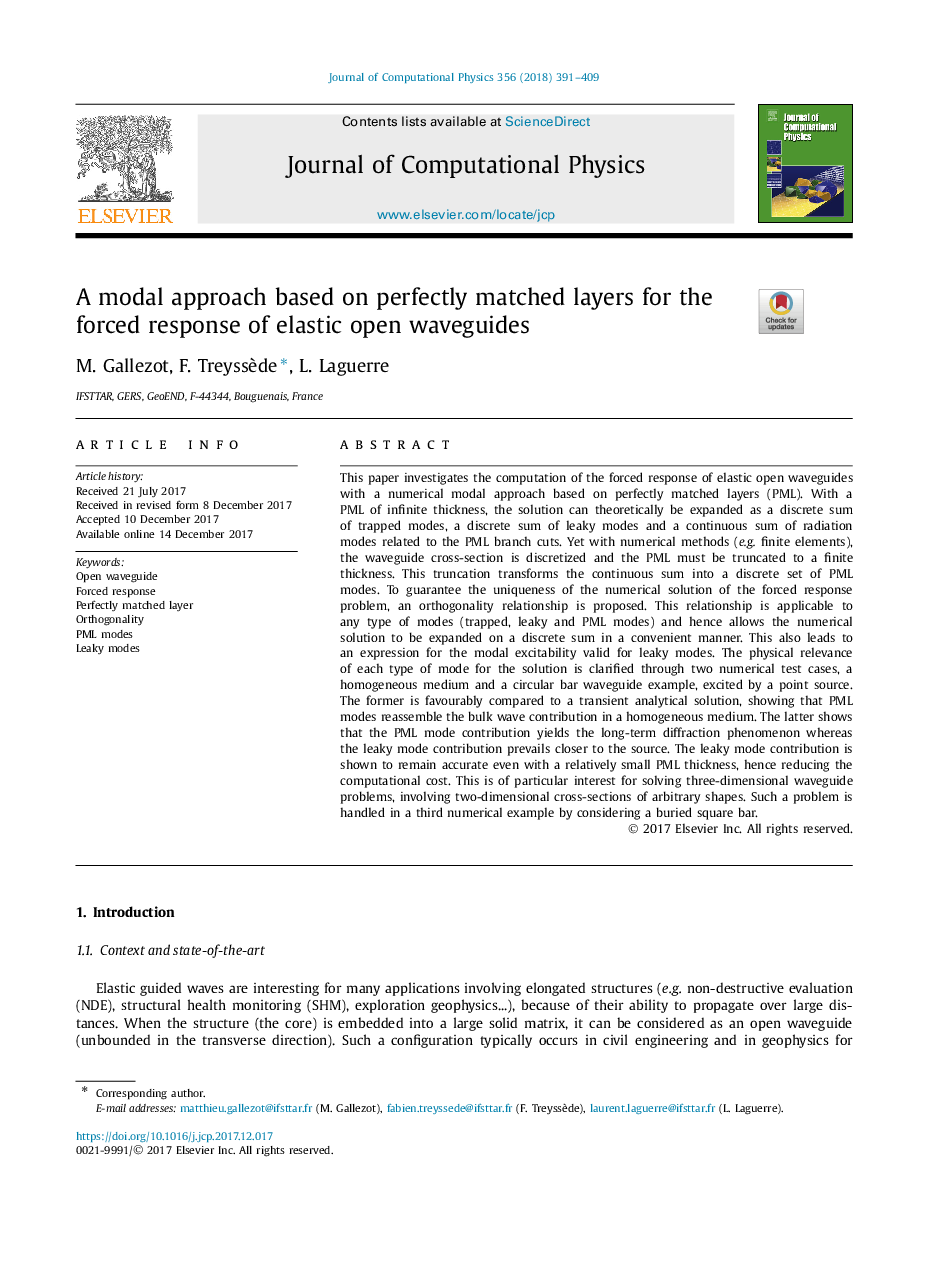| کد مقاله | کد نشریه | سال انتشار | مقاله انگلیسی | نسخه تمام متن |
|---|---|---|---|---|
| 6929176 | 1449357 | 2018 | 19 صفحه PDF | دانلود رایگان |
عنوان انگلیسی مقاله ISI
A modal approach based on perfectly matched layers for the forced response of elastic open waveguides
ترجمه فارسی عنوان
یک رویکرد مدال مبتنی بر لایه های کاملا هماهنگ برای پاسخ اجباری موجک های باز الاستیک است
دانلود مقاله + سفارش ترجمه
دانلود مقاله ISI انگلیسی
رایگان برای ایرانیان
کلمات کلیدی
موضوعات مرتبط
مهندسی و علوم پایه
مهندسی کامپیوتر
نرم افزارهای علوم کامپیوتر
چکیده انگلیسی
This paper investigates the computation of the forced response of elastic open waveguides with a numerical modal approach based on perfectly matched layers (PML). With a PML of infinite thickness, the solution can theoretically be expanded as a discrete sum of trapped modes, a discrete sum of leaky modes and a continuous sum of radiation modes related to the PML branch cuts. Yet with numerical methods (e.g. finite elements), the waveguide cross-section is discretized and the PML must be truncated to a finite thickness. This truncation transforms the continuous sum into a discrete set of PML modes. To guarantee the uniqueness of the numerical solution of the forced response problem, an orthogonality relationship is proposed. This relationship is applicable to any type of modes (trapped, leaky and PML modes) and hence allows the numerical solution to be expanded on a discrete sum in a convenient manner. This also leads to an expression for the modal excitability valid for leaky modes. The physical relevance of each type of mode for the solution is clarified through two numerical test cases, a homogeneous medium and a circular bar waveguide example, excited by a point source. The former is favourably compared to a transient analytical solution, showing that PML modes reassemble the bulk wave contribution in a homogeneous medium. The latter shows that the PML mode contribution yields the long-term diffraction phenomenon whereas the leaky mode contribution prevails closer to the source. The leaky mode contribution is shown to remain accurate even with a relatively small PML thickness, hence reducing the computational cost. This is of particular interest for solving three-dimensional waveguide problems, involving two-dimensional cross-sections of arbitrary shapes. Such a problem is handled in a third numerical example by considering a buried square bar.
ناشر
Database: Elsevier - ScienceDirect (ساینس دایرکت)
Journal: Journal of Computational Physics - Volume 356, 1 March 2018, Pages 391-409
Journal: Journal of Computational Physics - Volume 356, 1 March 2018, Pages 391-409
نویسندگان
M. Gallezot, F. Treyssède, L. Laguerre,
